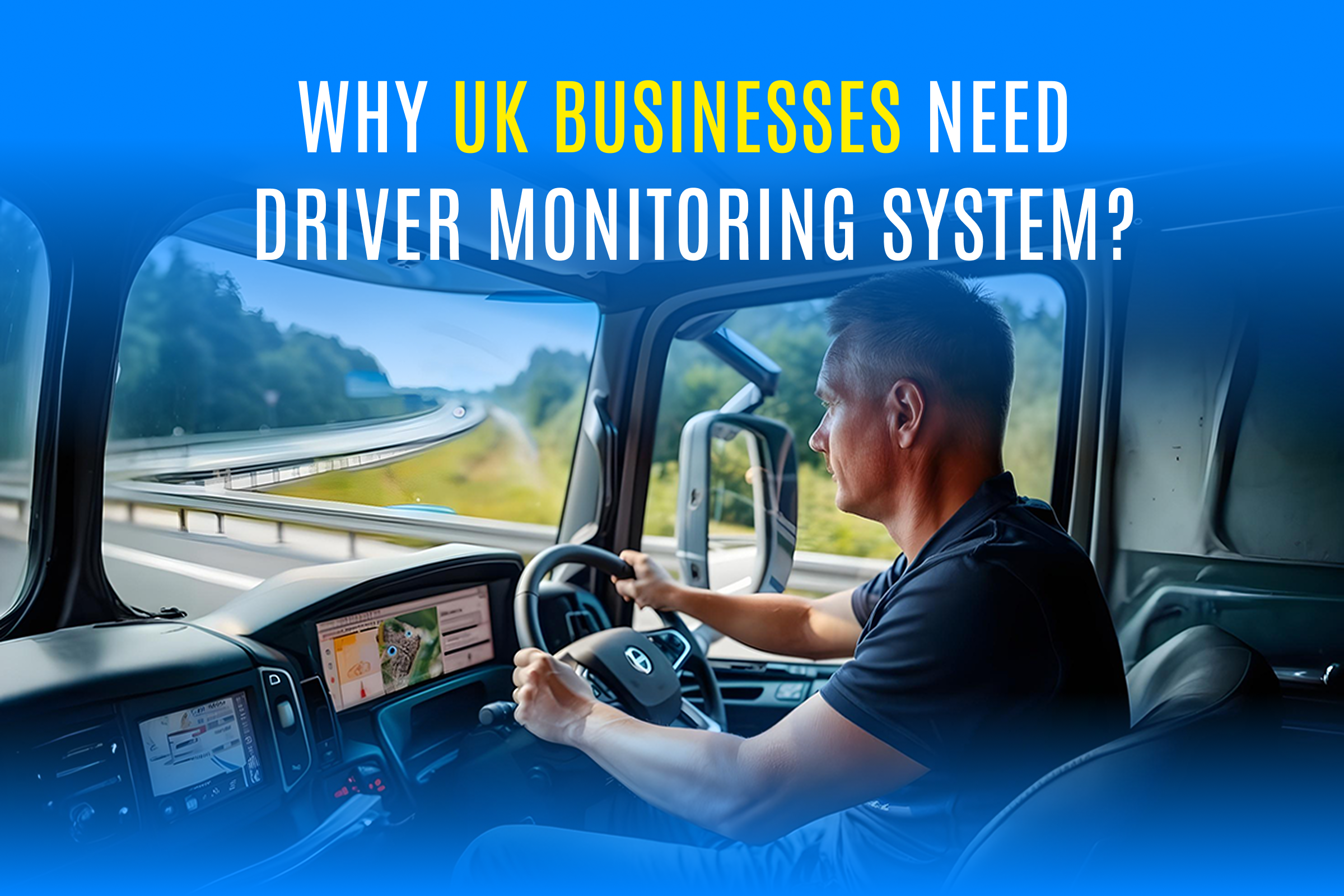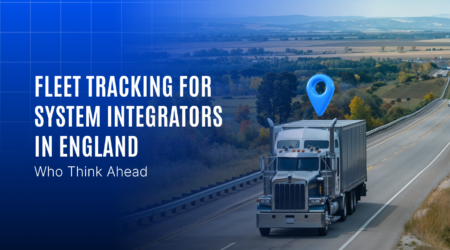Why UK Fleets Need an Advanced Driver Monitoring System in 2025

A driver monitoring system in the UK is crucial for road safety, especially for businesses managing fleets. According to the United Kingdom Department for Transport, driver fatigue and distractions cause over 20% of road accidents. A report by Brake, a road safety charity, highlights that one in six crashes involving death or serious injury is linked to driver fatigue. Additionally, RoSPA states that driving for more than two hours without a break increases accident risks significantly. With rising accident rates and stricter regulations, fleet operators must take proactive steps. A driver monitoring system enhances safety by tracking driver behavior, reducing risks, and ensuring compliance with laws. By integrating AI-powered monitoring and real-time alerts, businesses can improve driver performance while lowering operational costs. This blog explores why UK fleets should invest in an advanced driver monitoring system in 2025.
Why UK Fleets Need a Driver Monitoring System
- Increase in Road Accidents
More than 1,500 serious injuries or fatalities occur annually in the UK due to distracted driving. Driver fatigue is responsible for up to 40% of crashes on UK motorways, making it one of the leading causes of accidents. Many of these accidents happen because drivers are overworked, fail to take breaks, or become distracted while driving. Fleet managers need a solution that can detect these issues early and take preventive action. A driver monitoring system ensures that risky behaviors are identified and addressed before they lead to accidents. Moreover, integrating connected solutions like esim for uk allows fleet managers to maintain real-time monitoring and alerts for drivers even when vehicles are on the move, enhancing the system’s effectiveness.
- Compliance with UK Safety Rules
The UK government enforces strict fleet safety laws that require businesses to ensure their drivers are fit for duty. Companies that fail to meet these regulations may face legal consequences, heavy fines, and reputational damage. Insurance providers also encourage compliance by offering lower premiums to fleets using safety-enhancing technologies like driver monitoring systems. These systems help businesses track driver behavior, generate compliance reports, and take corrective actions when needed. Staying compliant not only improves safety but also protects businesses from unnecessary costs and legal trouble. - High Operating Costs
Fleet businesses already face high expenses from vehicle maintenance, fuel consumption, and insurance costs. Poor driving habits such as aggressive acceleration, excessive braking, and overspeeding contribute to increased wear and tear on vehicles. Additionally, accidents lead to costly repairs and downtime, affecting business operations. A driver monitoring system helps businesses identify and correct inefficient driving habits, reducing fuel consumption and vehicle damage. Research shows that businesses implementing such technology can save up to 15% on fuel and maintenance costs annually.
Key Features of an Advanced Driver Monitoring System
- Real-Time Driver Behavior Tracking
A driver monitoring system continuously observes driver behavior and identifies risky actions such as harsh braking, rapid acceleration, sudden lane departures, and prolonged driving without rest. When such behaviors are detected, the system alerts both the driver and the fleet manager, allowing immediate corrective action. This helps prevent accidents, improves driver accountability, and enhances overall fleet safety. - Video Telematics Integration
A driver monitoring system with video telematics integration captures real-time footage of the driver’s actions. This feature is useful for reviewing incidents, identifying causes of accidents, and resolving disputes. Fleet managers can access recorded footage to provide training and feedback to drivers, further improving safety standards. In case of an accident, video footage helps in insurance claims and legal proceedings, protecting the business from false accusations and liabilities. - AI-Powered Risky Behavior Tracking
Fatigue and distractions are the leading causes of road accidents. The system uses advanced video telematics technology to monitor driver attentiveness. It can detect signs of drowsiness, distractions, and lack of focus by analyzing facial expressions, eye movement, and head positioning. When fatigue is detected, the system alerts the manager so that correct decisions can be taken. This feature is crucial for ensuring driver alertness, reducing accident risks, and maintaining road safety. - Instant Alerts & Warnings
The system provides real-time alerts to notify drivers and fleet managers about unsafe behaviors. If a driver drifts out of a lane, exceeds the speed limit, or engages in distracted driving, immediate alerts are sent to prevent potential accidents. These alerts help create a culture of safety and responsibility among drivers, leading to improved performance and fewer incidents on the road. - Reports & Compliance Tracking
To ensure compliance with UK safety laws, the system generates detailed reports on driver performance. These reports highlight trends, flag risky behaviors, and provide insights into overall fleet safety. Fleet managers can use this data to take preventive measures, reward safe drivers, and implement targeted training programs. Compliance tracking also helps businesses prove their commitment to safety, which can lower insurance costs and improve operational efficiency.
Benefits of Using a Driver Monitoring System
- Reducing Accidents and Improving Road Safety
Driver monitoring systems play a significant role in reducing accidents caused by fatigue, distractions, and reckless driving. By providing real-time monitoring, instant alerts, and corrective feedback, these systems help prevent crashes and save lives. They encourage drivers to stay focused, take necessary breaks, and adopt safer driving habits. - Enhancing Driver Performance
When drivers receive regular feedback on their driving habits, they are more likely to improve their performance. The system encourages responsible driving behavior and helps fleet managers identify areas where drivers need additional training. By promoting a culture of accountability and continuous improvement, businesses can create a safer and more efficient fleet. - Saving Costs for Fleet Operators
By reducing accidents, preventing vehicle damage, and optimizing fuel consumption, driver monitoring systems offer significant cost savings. Businesses can expect to see lower insurance premiums, reduced repair costs, and better fuel efficiency. Investing in safety technology is a proactive approach that prevents costly incidents and improves overall profitability. - Ensuring Compliance with UK Fleet Safety Regulations
Legal compliance is a major concern for fleet operators. A driver monitoring system helps businesses stay compliant with UK road safety laws by tracking driver behavior, maintaining safety records, and generating compliance reports. This reduces the risk of fines, legal actions, and reputation damage.
Why Choose Our Driver Monitoring System?
Our system is easy to use, scalable, and highly effective. Here’s what makes it stand out:
- Works for fleets of all sizes, from small businesses to large corporations.
- Cloud-based system for real-time tracking and easy access to reports.
- Customizable alerts and insights to suit business needs.
- User-friendly dashboard for fleet managers to monitor driver behavior effortlessly.
 Conclusion
Conclusion
Fleet safety is no longer an option—it’s a necessity. With rising accident rates and stricter government regulations, businesses in the UK must invest in advanced safety tools to protect their drivers and assets. A driver monitoring system in the UK not only prevents accidents but also improves operational efficiency and reduces costs.


